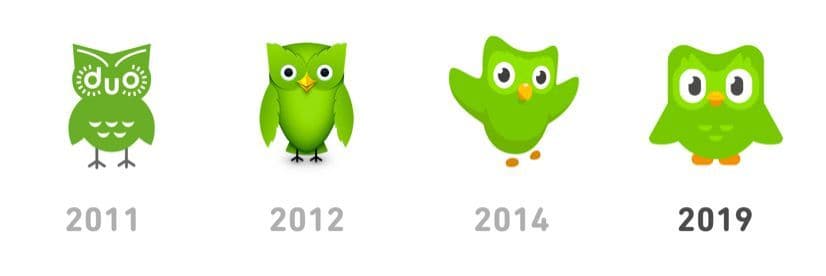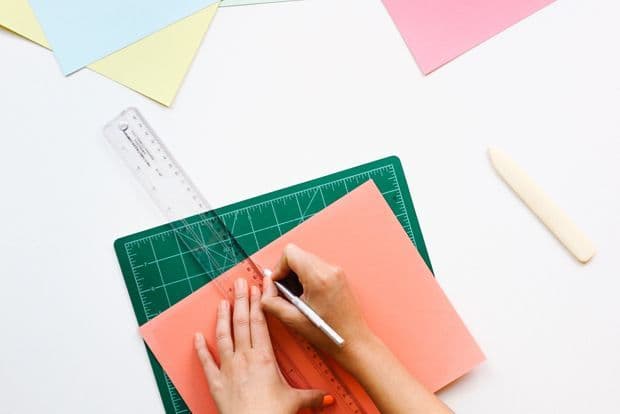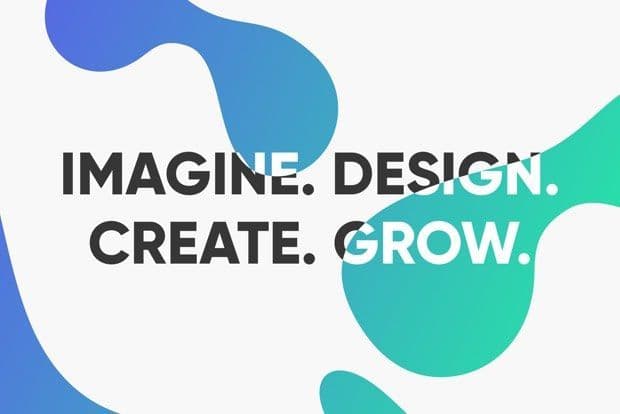branding
brand identity
+ 3 more ...
All You Need to Know About Brand Identity Design
07 Aug 2020
by Lotte, Digital Content Specialist
07 Aug 2020
by Lotte, Digital Content Specialist
branding
brand identity
UI/UX design
logo
marketing
All You Need to Know About Brand Identity Design
Table of contents
Contact us
We will get back to you in the next 48 hours.

Brand identity design forms the business card of your company. Here’s all you need to know about achieving a design that fits your business.
key takeaways
The brand identity of your business might be one of the most essential parts of how your customers perceive your company. It’s through branding and identity design that a business or brand aims to communicate clearly with their target audience, while transmitting their message through elements like their brand name, logo, style, and visuals.
These elements are usually the first things a customer is faced with when getting familiar with your business, and a good or bad brand design can make or break the success of your business. This blog dives deeper into the world of design, and shows you all you need to know about how to achieve an identity design that’s perfectly aligned with your brand.
Business goals and personality
Before you can even think of starting the design process of your brand identity, it’s essential to know and understand the precise goals and personality of your business. This involves the services your company providese, your target market, the size of your business, and the general language or message you want to convey to your customers.
The freedom of the general formality of the language you want to use to communicate to your customers greatly depends on the industry your business is active in. For example, governmental organizations or businesses active in the banking industry often possess a formal character and brand design, as they are required to convey a trustworthy and professional message to their customers.
Powerful branding doesn’t only rely on aesthetic features of brand elements, but also on the message and emotional appeal behind the design.
Usually, a designer asks its client to provide him/her with a list of 4-5 keywords precisely describing their business, their products, or the message they want to convey to their clients. An example of some keywords can be: friendly, informal, playful, and lighthearted.
These keywords are meant to give a designer a clear starting point. As a designer, it is essential to be aware of the concept of design thinking, and know how to apply it to your customers.
Design thinking revolves around the human-centered process of creating a deep understanding of what the end-user needs, while letting go of your own interpretations and prejudices. It is up to the designer to be able to ask the right questions in order to trigger the right answers to create a deeper and valuable understanding of the client.
Market research
Once it’s clear how the client pictures its own business goals and business personality, the next step for the designers is to dive into the market in search for possible competition and inspiration. Potential competitors show the general character of a certain industry or product, and can give a good insight into what “unwritten” rules are applied regarding the formality and freedom of a design.
Design thinking still plays an indispensable role in the stage of market research, as this stage allows designers to gain a deeper understanding of their target audience, and how they interact with the designs of competitors.
Market research is essential in order to create a brand identity that makes a business stand out from the crowd. Especially nowadays, there is a business for pretty much everything, so convincing your target audience that your brand is better than the others requires something that makes you stand out.
And as the design of your brand is the first thing your customers are faced with, it should be outstanding enough for them to choose your brand over another.
Logo design
The logo of your business is most likely the most important element of your brand identity, as it will come back in almost all situations where your business is involved in. Your logo will appear on your website, your business cards, on the front of documents like contracts or letters.
In short, anywhere your business is mentioned, your logo will have its prominent place in the spotlight. The process of logo design follows a couple of principles that are needed in order to deliver a successful end-product:
- Design brief: discussing the customer’s and end-users needs by the principles of design thinking.
- Business research: the designer dives into the market and researches competition and possible solutions. Closely researching competitors ensures that the designer doesn’t accidentally come up with a design that is too similar to another brand.
- Brainstorming: conceptualize ideas and information gathered during the research process and make decisions with your client on possible design solutions
- Designing: sketch and try out different things, from colors to fonts.
- Presenting: deliver the design to your client and let them create a list of feedback points.
- Iterative revision: make continuous adjustments following the feedback of your client until eventual client approval is established. Designers need to test out their logo on different types and sizes of digital media and surfaces in order to make sure the design is suitable for all situations and placements.
- Delivery and style guide: hand the finished logo to the client together with the delivery of a style guide. A style guide is an oversight of all style elements used in the design, like colors, fonts, font sizes, for the client to use for future purposes.
Want to find out how much it costs to build your dream app or web app?
Other visual elements
Many businesses make use of visual aspects in order to personalize their brand. Think of, for example, specific color elements or the use of custom design characters like mascots that symbolically represent a brand.
The popular educational language application Duolingo, for example, has a green owl as their mascot, as owls are often brought into comparison with qualities like intelligence and knowledge.
Or take the note taking application Evernote which, since its launch, has an elephant in their logo, with the underlying idea that “an elephant never forgets”. A mascot typically serves as a tool to communicate a specific message to the target audience, and generally have a much stronger connection with users than a logo.

Beside the use of mascots, visual elements like typography also plays a very important role in the message a brand wants to convey to its audience. Think of the popular font “Comic Sans”, which was broadly used by professional businesses during the 90s, but lost its business-shine when it began to be used ironically. Implementing the Comic Sans font in your brand identity nowadays will very likely result in your audience not taking your business seriously.
Corporate brand
When all the visual elements, from color palettes, fonts, and logos are designed and prepared, it is time to combine them all together in a corporate style. This means that all attributes of the design have to come together in a harmonious whole that represents your brand to the outside world.
Your corporate brand identity will be used for, for example, business cards, correspondence in the form of letters and emails, banners and ads, poster design company cars, and company clothing like t-shirts and hats. In other words, your corporate design will appear on all the attributes that bring your business to the outside world.
The style guide
When all the material content is designed, produced, and delivered, it’s also important to have a style guide, or brand book with all the information about your design. This is a document that includes all decisions taken during the design process, from typography to color palettes. It also provides instructions on how to use all the graphic elements created for the brand, as there are incorrect ways to make use of the design.
For example, recurring inconsistent use of the graphical elements can decrease the overall trust of steadiness in your brand. Usually, the essential elements that need to be included in the brand book consist of the following:
- The story and personality of the brand
- The logo guidelines, including sizes, proportions
- The color palette with all precise color codes
- Typography, including the alignments and spacings
- Imagery
- Brand words, which consists of a few words that describe your brand best
Brand Identity Design at Lizard Global
At Lizard Global, our UI/UX designers are experienced with helping businesses with the identity design of their brand. They understand how times can change, and how businesses and their identity designs have to change along in order to stay in the spotlights.

The design process happens in close collaboration with our customers, so we can make sure that all elements are closely aligned with their needs and the unique identity of their business.
Do you need a hand in the identity design process of your brand? Don’t hesitate to drop us a line, and let’s meet up to see how we can bring your business to the next level with a sleek and unique design.
Join 2000+ subscribers
Stay in the loop with everything you need to know

Brand identity design forms the business card of your company. Here’s all you need to know about achieving a design that fits your business.
The brand identity of your business might be one of the most essential parts of how your customers perceive your company. It’s through branding and identity design that a business or brand aims to communicate clearly with their target audience, while transmitting their message through elements like their brand name, logo, style, and visuals.
These elements are usually the first things a customer is faced with when getting familiar with your business, and a good or bad brand design can make or break the success of your business. This blog dives deeper into the world of design, and shows you all you need to know about how to achieve an identity design that’s perfectly aligned with your brand.
Business goals and personality
Before you can even think of starting the design process of your brand identity, it’s essential to know and understand the precise goals and personality of your business. This involves the services your company providese, your target market, the size of your business, and the general language or message you want to convey to your customers.
The freedom of the general formality of the language you want to use to communicate to your customers greatly depends on the industry your business is active in. For example, governmental organizations or businesses active in the banking industry often possess a formal character and brand design, as they are required to convey a trustworthy and professional message to their customers.
Powerful branding doesn’t only rely on aesthetic features of brand elements, but also on the message and emotional appeal behind the design.
Usually, a designer asks its client to provide him/her with a list of 4-5 keywords precisely describing their business, their products, or the message they want to convey to their clients. An example of some keywords can be: friendly, informal, playful, and lighthearted.
These keywords are meant to give a designer a clear starting point. As a designer, it is essential to be aware of the concept of design thinking, and know how to apply it to your customers.
Design thinking revolves around the human-centered process of creating a deep understanding of what the end-user needs, while letting go of your own interpretations and prejudices. It is up to the designer to be able to ask the right questions in order to trigger the right answers to create a deeper and valuable understanding of the client.
Market research
Once it’s clear how the client pictures its own business goals and business personality, the next step for the designers is to dive into the market in search for possible competition and inspiration. Potential competitors show the general character of a certain industry or product, and can give a good insight into what “unwritten” rules are applied regarding the formality and freedom of a design.
Design thinking still plays an indispensable role in the stage of market research, as this stage allows designers to gain a deeper understanding of their target audience, and how they interact with the designs of competitors.
Market research is essential in order to create a brand identity that makes a business stand out from the crowd. Especially nowadays, there is a business for pretty much everything, so convincing your target audience that your brand is better than the others requires something that makes you stand out.
And as the design of your brand is the first thing your customers are faced with, it should be outstanding enough for them to choose your brand over another.
Logo design
The logo of your business is most likely the most important element of your brand identity, as it will come back in almost all situations where your business is involved in. Your logo will appear on your website, your business cards, on the front of documents like contracts or letters.
In short, anywhere your business is mentioned, your logo will have its prominent place in the spotlight. The process of logo design follows a couple of principles that are needed in order to deliver a successful end-product:
- Design brief: discussing the customer’s and end-users needs by the principles of design thinking.
- Business research: the designer dives into the market and researches competition and possible solutions. Closely researching competitors ensures that the designer doesn’t accidentally come up with a design that is too similar to another brand.
- Brainstorming: conceptualize ideas and information gathered during the research process and make decisions with your client on possible design solutions
- Designing: sketch and try out different things, from colors to fonts.
- Presenting: deliver the design to your client and let them create a list of feedback points.
- Iterative revision: make continuous adjustments following the feedback of your client until eventual client approval is established. Designers need to test out their logo on different types and sizes of digital media and surfaces in order to make sure the design is suitable for all situations and placements.
- Delivery and style guide: hand the finished logo to the client together with the delivery of a style guide. A style guide is an oversight of all style elements used in the design, like colors, fonts, font sizes, for the client to use for future purposes.
Want to find out how much it costs to build your dream app or web app?
Other visual elements
Many businesses make use of visual aspects in order to personalize their brand. Think of, for example, specific color elements or the use of custom design characters like mascots that symbolically represent a brand.
The popular educational language application Duolingo, for example, has a green owl as their mascot, as owls are often brought into comparison with qualities like intelligence and knowledge.
Or take the note taking application Evernote which, since its launch, has an elephant in their logo, with the underlying idea that “an elephant never forgets”. A mascot typically serves as a tool to communicate a specific message to the target audience, and generally have a much stronger connection with users than a logo.

Beside the use of mascots, visual elements like typography also plays a very important role in the message a brand wants to convey to its audience. Think of the popular font “Comic Sans”, which was broadly used by professional businesses during the 90s, but lost its business-shine when it began to be used ironically. Implementing the Comic Sans font in your brand identity nowadays will very likely result in your audience not taking your business seriously.
Corporate brand
When all the visual elements, from color palettes, fonts, and logos are designed and prepared, it is time to combine them all together in a corporate style. This means that all attributes of the design have to come together in a harmonious whole that represents your brand to the outside world.
Your corporate brand identity will be used for, for example, business cards, correspondence in the form of letters and emails, banners and ads, poster design company cars, and company clothing like t-shirts and hats. In other words, your corporate design will appear on all the attributes that bring your business to the outside world.
The style guide
When all the material content is designed, produced, and delivered, it’s also important to have a style guide, or brand book with all the information about your design. This is a document that includes all decisions taken during the design process, from typography to color palettes. It also provides instructions on how to use all the graphic elements created for the brand, as there are incorrect ways to make use of the design.
For example, recurring inconsistent use of the graphical elements can decrease the overall trust of steadiness in your brand. Usually, the essential elements that need to be included in the brand book consist of the following:
- The story and personality of the brand
- The logo guidelines, including sizes, proportions
- The color palette with all precise color codes
- Typography, including the alignments and spacings
- Imagery
- Brand words, which consists of a few words that describe your brand best
Brand Identity Design at Lizard Global
At Lizard Global, our UI/UX designers are experienced with helping businesses with the identity design of their brand. They understand how times can change, and how businesses and their identity designs have to change along in order to stay in the spotlights.

The design process happens in close collaboration with our customers, so we can make sure that all elements are closely aligned with their needs and the unique identity of their business.
Do you need a hand in the identity design process of your brand? Don’t hesitate to drop us a line, and let’s meet up to see how we can bring your business to the next level with a sleek and unique design.
Join 2000+ subscribers
Stay in the loop with everything you need to know
FAQs

What is brand identity design?
Why is brand identity important?
What comes first: design or strategy?
How do you approach logo design?
Besides a logo, what visual elements matter?
What is a style guide (brand book) and why is it needed?
Can brand identity evolve over time?
similar reads

UI/UX Design
Software Development
7 Reasons Why You Should Use Responsive Web Design
20 February 2023

UI/UX Design
All You Need to Know About Brand Identity Design
21 February 2023

Agile
Lean & Scrum
Software Development
UI/UX Design
Digital Conceptualization
Imagine, Design, Create & Grow With Lizard Global: The Full Journey
21 February 2023




